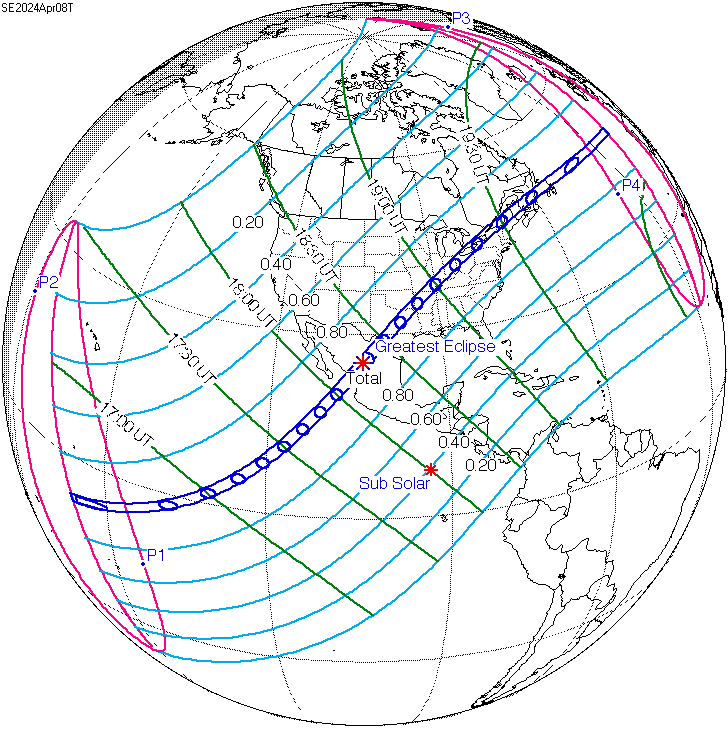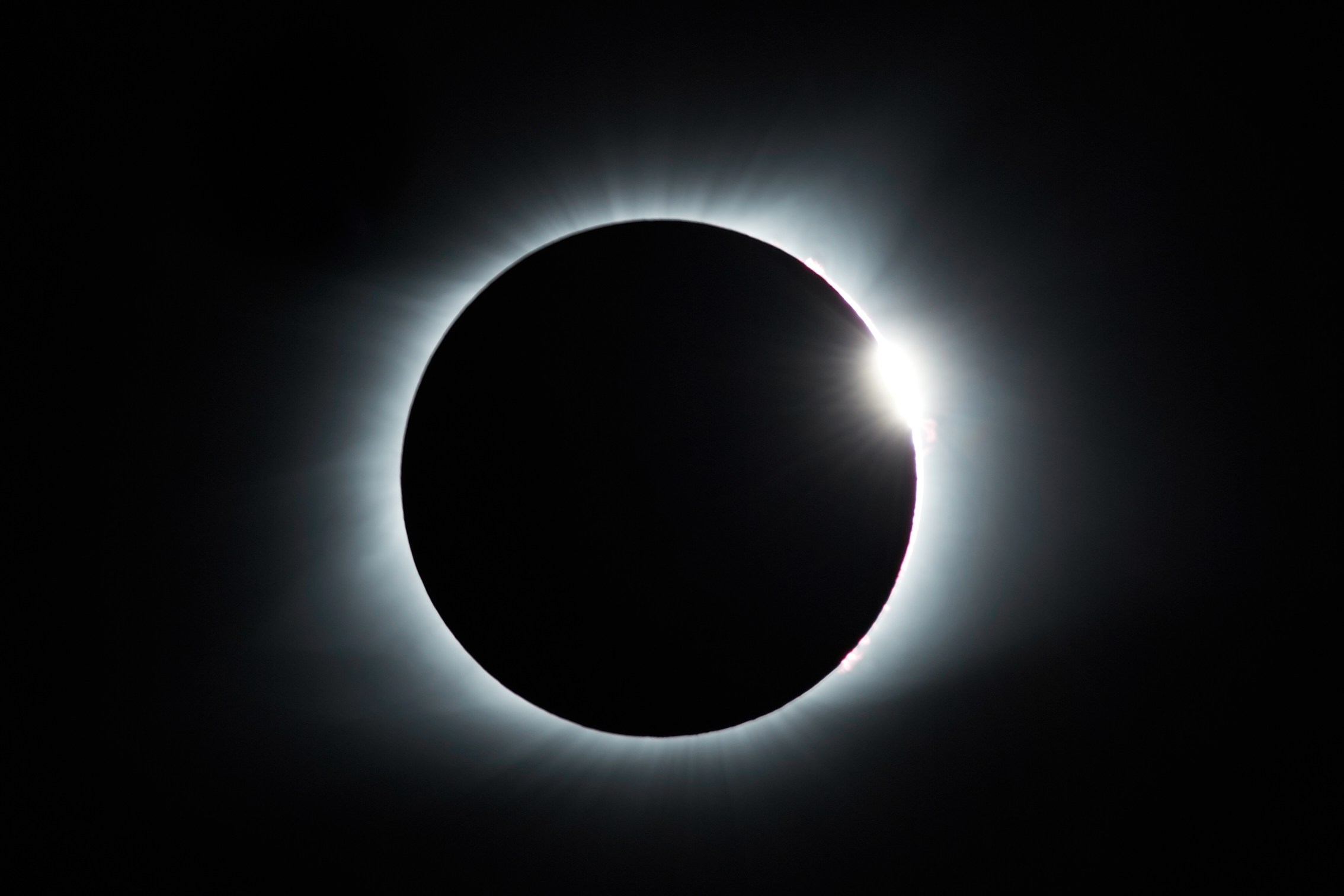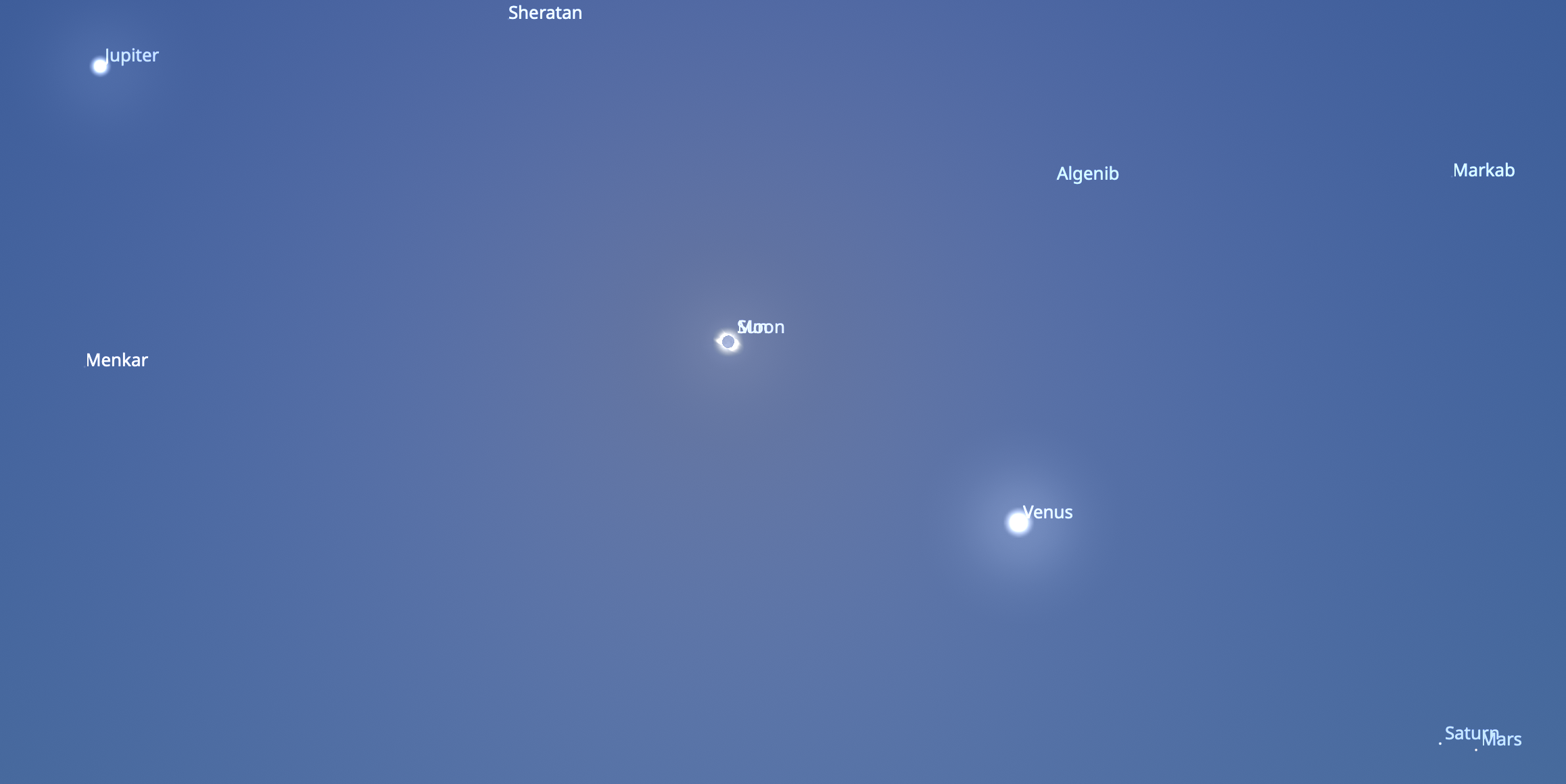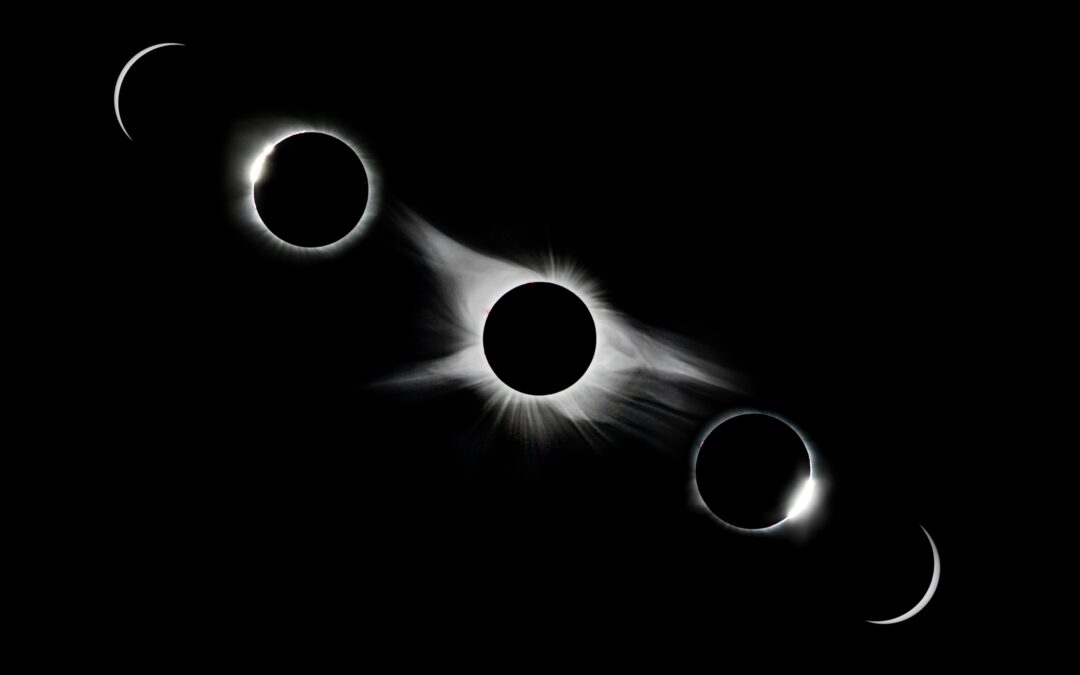
On April 8, 2024, the Moon will cover the Sun for a few minutes, as seen from a small strip of Earth spanning parts of Mexico, USA, and Canada. The Moon’s shadow will sweep from southwest to northeast.
Other regions of North America not in the direct shadow will still experience a partial solar eclipse, which is nothing at all like the experience of a total solar eclipse.
The temperature will drop, shadows will get weird, and animals will think it’s bedtime. These are just some of the phenomena that surround eclipses.
Another total solar eclipse won’t pass over largely populated regions of the United States until August 12, 2045. That’s one reason not to miss this year’s event.
Expect extra traffic on the day of the eclipse, which on this occasion is a Monday. For this reason it’s recommended to arrive at a spot in the path of totality the day before, and stay until the day after.
Be sure to wear eclipse glasses if you look at the Sun at any time other than during totality.

I wrote a series of blog posts in preparation for the last North American eclipse, which took place August 21, 2017:
The Moon will be closer to Earth this time than in 2017, which will have two main consequences:
- The duration of totality will be longer with a maximum of 4 minutes and 28 seconds from Nazas, Durango, Mexico, compared to a maximum duration of 2 minutes and 40 seconds during the 2017 eclipse.
- The width of the Moon’s shadow will also be greater, peaking at 123 miles this time compared to 71 miles in 2017.

Using Stellarium, we can see that during totality we should expect to see several planets. Venus will be the brightest, leading (west of) the Sun and Moon. Jupiter will be next brightest, following (east of) the Sun and Moon. Saturn and Mars will be about the same brightness and next to each other, leading Venus by a greater amount than Venus leads the Sun and Moon.
Let’s hope the clouds cooperate and stay out of the way during totality! If they don’t, it will still get dark. Using statistics of past April weather data, it’s most likely for Mexico to have clear skies, Texas (where I plan to be) has about a 50-50 chance, and the rest of the areas are less likely.
With a clear view of the eclipse, however, we will be able to see the solar corona and chromosphere, which we can’t otherwise see on a typical sunny day.

